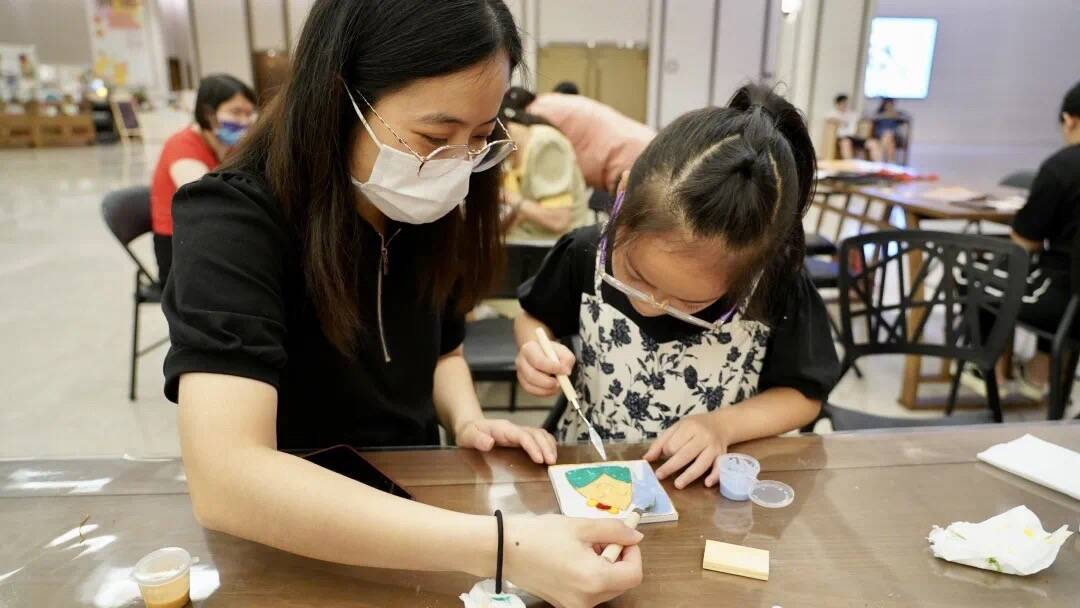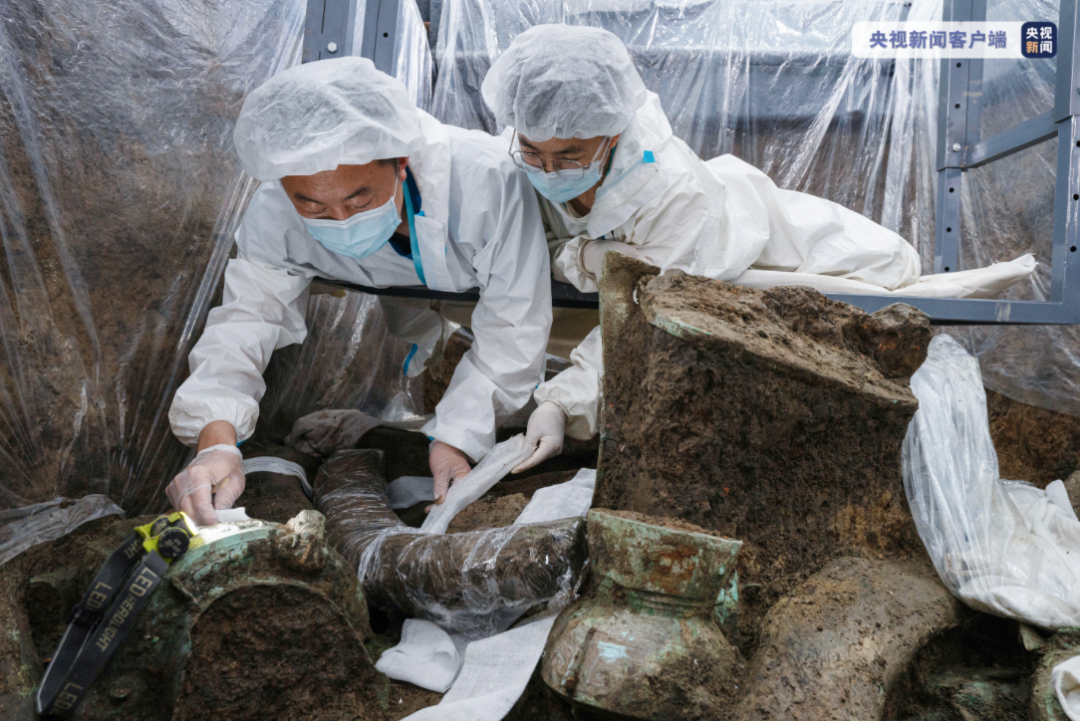With the art of "chaotic", she enters non -heritage "embroidery" into the home of ordinary people
Author:Intersection Time:2022.06.23
["Powerful Power's '890' Small File"]
Name: Wu Cheng
Born: April 1985
Occupation: Member of the Youth Federation of Jiangsu Province, the fourth -generation inheritor of the fourth -generation inherited needle embroidery of the intangible cultural heritage, the master of the arts and crafts of Changzhou
Rich colors, smooth lines, strong layering ... Entering the Changzhou Museum of Embroidery Museum, a lifelike artwork is displayed here. Still painting.
In this nation's only chaotic needle embroidery museum, there are many hard work of the fourth generation of the four generations of stitches. As the fourth -generation inheritor of the non -heritage project, Wu Cheng also placed his studio here. In this ingenious world, she flew into a needle and draws a different kind of splendid world.

Wu Cheng
Centennial Fangfei Four Generations Biography
In the 1930s, the random needle embroidery art was founded by Yang Shouyu, a talented daughter of Changzhou. Different from the four traditional embroidery in China, the art of random needle embroidery is a one -piece art. Its embroidery method is self -contained and has been regarded as "Oriental oil painting". It has a history of nearly a century. "Taking needles as a pen, with silk as Danqing, the painting and embroidery method are integrated into one, from the character of the gang to win the peak of the embroidery art, and the famous painter Liu Haisu described it in this way. The characteristics of random needle embroidery are emerged. The irregular needle embroidery is unforgettable with its unique needle and rich colors.

Wu Cheng's mother, Sun Yanyun's random needle embroidery work "Van Gogh"
Wu Cheng's grandmother Chen Yaxian is the closing disciple of Yang Shouyu, the founder of the chaotic needle embroidery. Grandmaster. In the artistic atmosphere created by grandmother and mother from an early age, Wu Cheng'er was stained with various needle and technical application of stitches and techniques, which produced a strong feelings. The mother also consciously cultivated Wu Cheng. From the age of six, Xiao Wu Cheng learned Chinese painting, oil painting, and sketch in order. "This is because random needle embroidery is a reference to Western sketching and oil painting techniques. It is one of the pioneering embroidery arts of Chinese and Western combination. If you want to learn random needle embroidery, you must not only have a solid basic skills of embroidery. There must also be a professional painting foundation. "Wu Cheng recalled his childhood with a smile." I think I am quite talented. "On the basis of cultivating the painting skills, Wu Cheng, who grew up next to the embroidery frame, can be very young. Embroidered independent embroidery.
It seems to be unique and unique
To draw a random needle embroidery, first of all, you need to use a painting or photo as a reference. After experiencing the steps of pioneering, upper, color matching, coloring, etc., it is supplemented by unique needle methods. The irresistible embroidery is chaotic. In the new embroidery method with different lengths and crosses and messy lines and three -dimensional layered color adding color, there are also certain rules. "Flexible needle embroidery needle method. According to the needs of the picture, the craftsman must constantly measure the trend of the silk thread in the hand." In Wu Cheng's view, each random needle embroidery is unique. In the process, the need to think about the needle and the overlapping of colors. Even if the same person is the same person, it is destined to be different.

Wu Cheng at work

The level is an important part of the effect of oil painting to achieve oil painting. Wu Cheng said that the difference between stitches and other embroidery is that it is not a flat embroidery method, but a high degree of restoration of the reference object through the combination of needle and color to achieve realistic effects. "The clothes wearing the people in the painting, whether it is cotton or cashmere, can be presented by stitched needle embroidery, so that the viewer can be distinguished at a glance. This is a kind of charm that is quite interesting to embroidery." Wu Cheng introduced, "Different colors and thickness lines are stacked together to form a gradient layering and three -dimensional sense of image." In her studio, there is only one color line, which can be divided into a slight difference. 48 similar colors. There are 14 models with different sizes and thickness. Not only that, in the process of embroidery, Wu Cheng often split a line multiple times and divides into thinner lines, uniform. "The more the upper lines, the more thinner and lighter, the skin texture of the human body also needs very thin silk threads to express." Wu Cheng pinched a small embroidery needle with double fingers, quickly shuttled on the canvas, counting it, counting the finely counting, and counting the finely counting. The doorway in the needle embroidery. Such a flying needle is often tens of thousands of times a day. Talking about his most satisfactory work, Wu Cheng mentioned a statue of Bajin embroidery transformed from sculpture. At an art exhibition in 2015, when Wu Cheng saw a clay quality Papin sculpture, he came into an idea of turning the sculpture into a needle embroidery. After she took a picture, after returning to the studio, through the repeated concepts and color matching of more than half a year, the texture of the sculpture itself was realized in the embroidery of random needles. This innovative attempt to transform the three -dimensional art is a challenge for her, and it has also become a new breakthrough point.
Wu Cheng's chaotic needle embroidery works "Dialogue through time and space"

Breakthrough carrier inheritance innovation
Traditional needle embroidery is subject to artificial hand embroidery, frame size and complexity of the picture. Even a skillful craftsman can only complete five or six works a year. Therefore, in the past, chaos embroidery was mostly used as collectors and decorations, and was also given to foreign politicians and well -known people as national ceremonies. The high price leads to "raising in the deep girlfriend" and it is difficult to open the market. In order to understand more art forms, Wu Chengyuan crossed the ocean and went to the Quinteland College, Canada to design it. After returning to China, she was determined to stimulate the vitality of non -heritage art, let the stitches embroidery out of the frame, and open up the barriers of art and life.
Random needle embroidery derivatives


"Random needle embroidery should not be just an embroidery, hanging there and being exhibited there. I want to apply the tall art to the daily necessities of the public. An object, only you always use it to make it a life of life to become the life of life. In part, this is really fulfilled. "After a period of exploration, Wu Cheng established his own studio and founded the" Chengwu "brand of random needle embroidery derivatives. , Bags, notebooks and other new carriers. The team members moved closer to the aesthetics of young people one by one, and developed the needle embroidery into a grounded artistic style. From local embroidery to the combination of embroidery printing, Wu Cheng is both a designer and a product development manager. He also takes into account costs and risks. Since its entrepreneurship, it knows that it is cold and cold, but whenever you see the newly developed chaotic needle embroidery, cross -border finished products have become explosive models, and instantly snapped up online, Wu Cheng will be more firm for the traditional and innovative persistence.
Wu Cheng is an experience class for children's random needle embroidery.

In addition to the production of derivatives, Wu Cheng also developed children's teaching of random needle embroidery. By simplifying the techniques, letting children learn to learn, feel the unique charm of non -heritage, and improve the awareness of the younger generation of protection and inherit non -heritage. "I want to integrate art into the way of life, so that more people can get close contact and feel the beauty of stitched needle embroidery."
The needle line is silent, outlines the exquisite century. Random needle embroidery is a treasure in Wu Cheng's heart and one of the "three treasures of Changzhou". In August 2021, Changzhou Random Stick Embroidery was successfully selected into the fifth batch of national non -heritage representative project list expansion project list, which gave Wu Cheng more confidence and longing for this non -heritage inheritance and development.
Planning: Tian Mei Du Xueyan
Coordinating: Tang Cheng Xiao Lei
Text: Yu Yue
Video: Wang Ruifeng
- END -
Shimao Haisi Museum Carry out the "Cultural and Natural Heritage Day" series of activities

June 11th is the 17th cultural and natural heritage day in my country. Wonderful c...
Samsung pile major discovery!Huge amount of information

Today (13th), the Sichuan Provincial Institute of Cultural Relics and Archeology h...